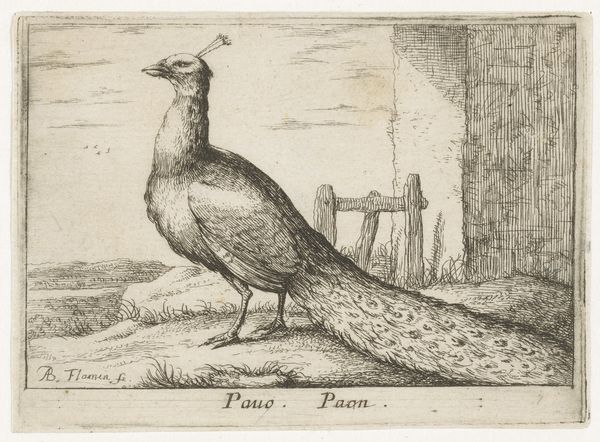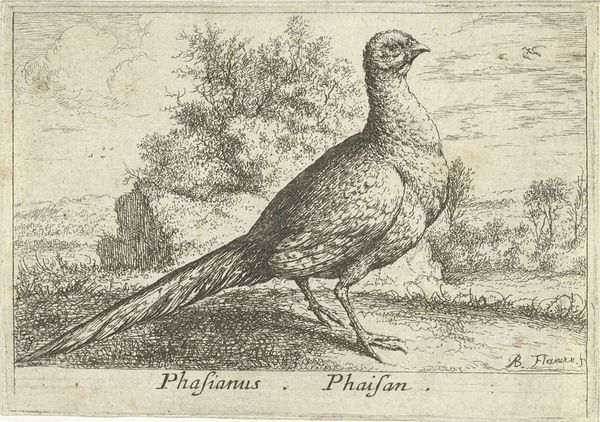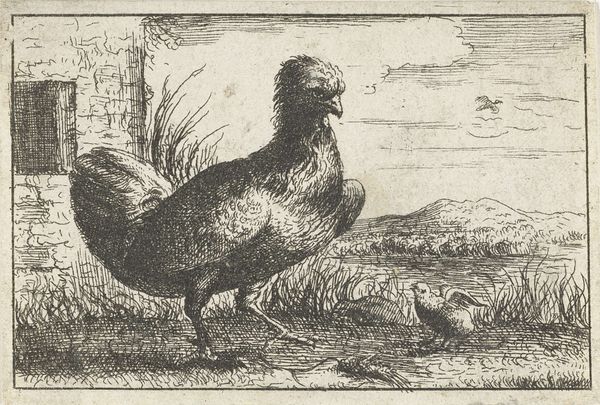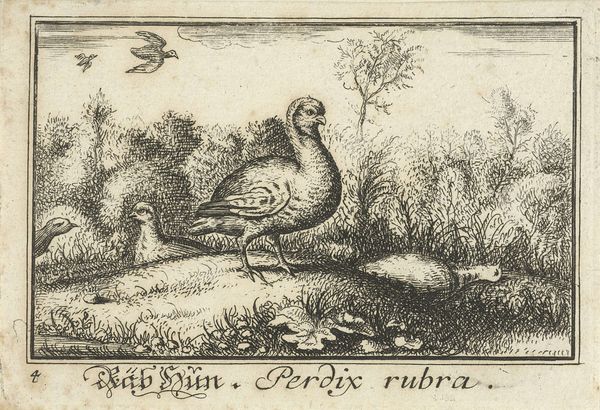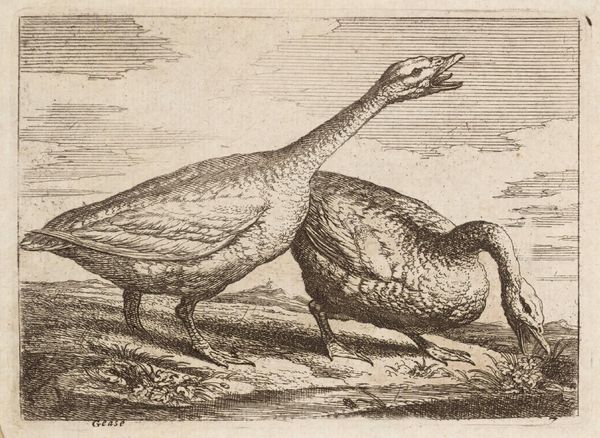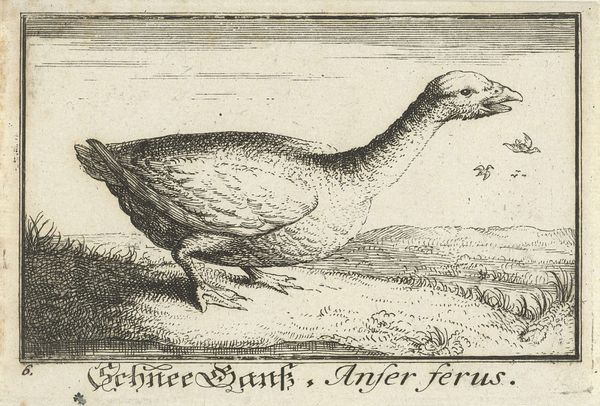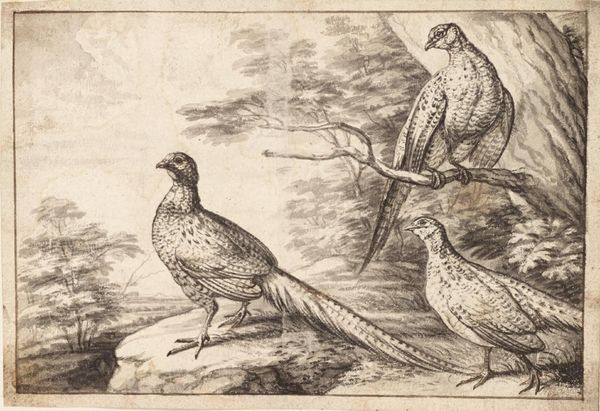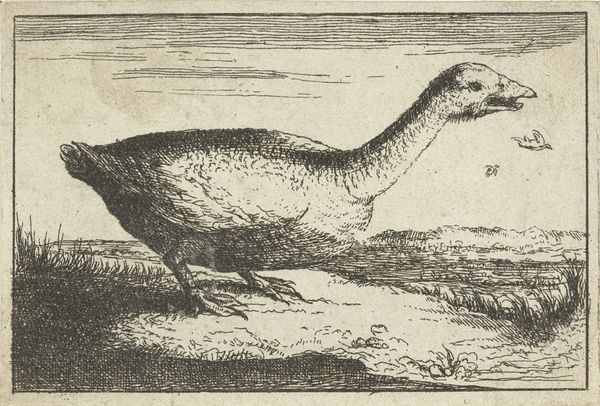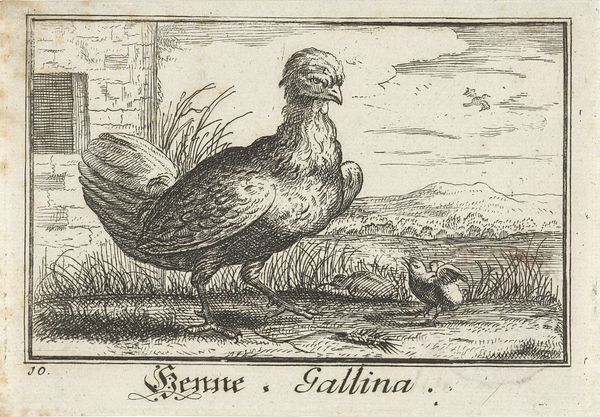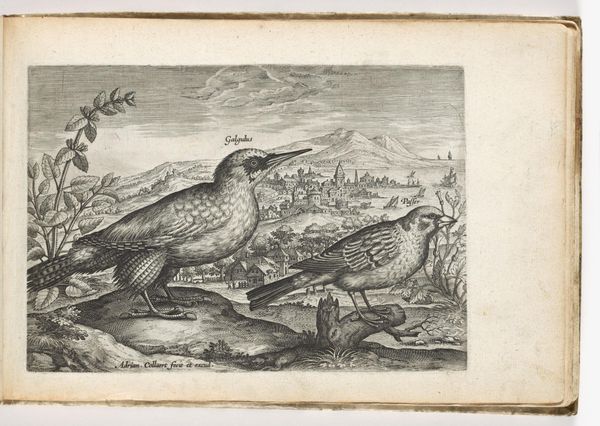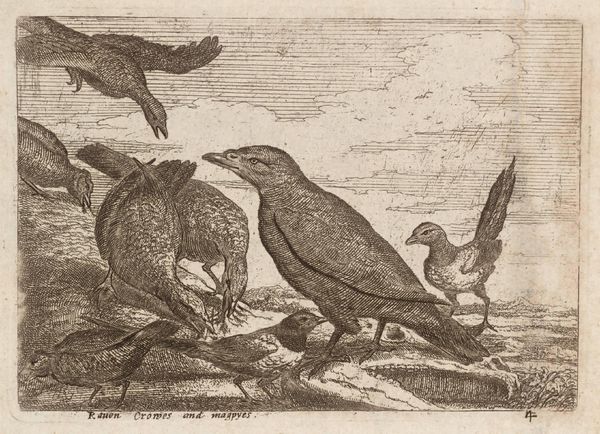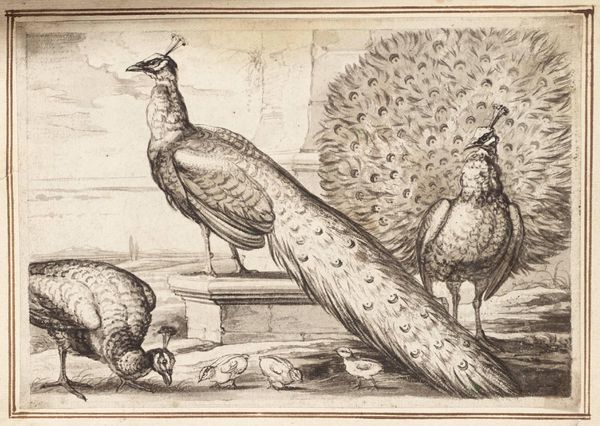
print, engraving
# print
#
engraving
Dimensions: height 73 mm, width 107 mm
Copyright: Rijks Museum: Open Domain
Editor: Here we have an engraving called "Landschap met pauw", or Landscape with Peacock, made by an anonymous artist sometime after 1659. It's quite detailed for a print, and the texture of the feathers is incredible! What strikes you most about this piece? Curator: I immediately consider the means of production. This isn't a unique painting, but a print – a multiple. Think about the labour involved in engraving the plate, the skill in rendering such detail, and the intention behind creating a reproducible image. It allows for wider distribution, and a broader access to the depiction of something exotic, like this peacock. Editor: That’s interesting! I hadn't thought about the work required to create the print itself. It seems like a deliberate choice to make this image more accessible. What kind of access are we talking about? Curator: Consider the social context. Who would have been buying and consuming these prints? This speaks to an emerging market for images, possibly among a rising merchant class keen to display symbols of wealth and knowledge. The peacock itself becomes a commodity, circulated and consumed through these prints. Is this an emblem of luxury transformed for popular consumption? Editor: So, it's less about appreciating the artistry and more about understanding how the print was used and circulated within its society? Curator: Precisely! The value lies in understanding how art becomes entwined with the materials, labour, and social structures of its time. Think about the paper, the ink, the printing press, the distribution networks. It's all part of the story. Editor: I see. Thinking about the process makes me appreciate the artwork on a completely different level. It's no longer just a pretty bird; it's a window into the economic and social realities of the 17th century. Curator: Exactly. By examining the materials and processes, we reveal the networks of labour and consumption that shaped artistic production. It moves us beyond simple aesthetics, revealing a far richer context.
Comments
No comments
Be the first to comment and join the conversation on the ultimate creative platform.
